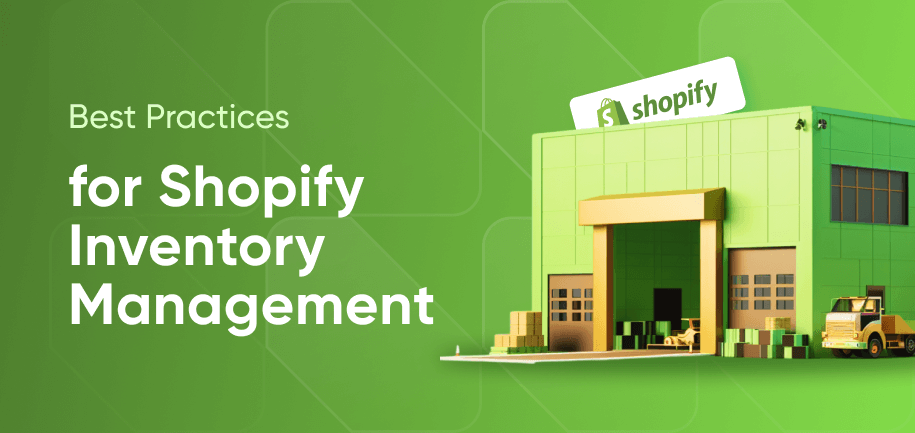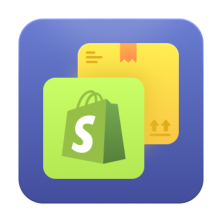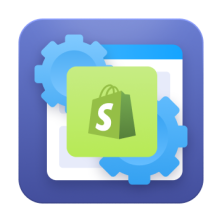There’s so much to organize and manage in a traditional retail business that it can be an overwhelming and costly proposition for entrepreneurs. Many retailers have slashed the daunting load of management responsibilities and financial obstacles caused by Shopify dropshipping.
It’s fair to say that choosing the dropshipping mode of business operations for retailers can mean a simpler, easier, more financially secure, and stronger growth potential. Those benefits make dropshipping an easy choice for more new business owners every day. But how to start a Shopify dropshipping store?
That's what we're here to answer. Let’s take a closer look at how to start dropshipping on Shopify from the ground up.
What is Dropshipping?
Dropshipping is a retail fulfillment method where a store doesn't keep the products it sells in stock. Instead, a seller takes orders from buyers (online, by phone, mail, or via other means), executes purchase transactions, and then communicates delivery orders to a dropshipping service for fulfillment.
The dropshipping service (typically a supplier or wholesaler) then processes the order, packages the products, and ships them directly to the customer. Suppliers can either store inventory or order it on a per-purchase basis.
The dropshipping arrangement allows you to operate without holding inventory, reducing upfront costs and logistical complexities while offering a wide range of products to customers with minimal operational overhead.
How Does Shopify Dropshipping Work?
Online sellers can use dropshipping by selling from a retail platform (Amazon, eBay, or similar marketplaces) as well as a store on Shopify, Magento, Wix, or other e-commerce platforms.
It’s not complicated to learn how to use dropshipping with Shopify. Here's the gist of things:
- Customer Places an Order – A customer visits your Shopify store and places an order for a product.
- Order Notification – Shopify notifies you of the new order via dashboard or email.
- Order Processing – You, as the store owner, manually or automatically forward the order details to your dropshipping supplier.
- Supplier Fulfillment – The dropshipping supplier processes the order, packs the product and ships it directly to the customer.
- Shipping Notification – The supplier provides a tracking number or shipping confirmation to you, which you then relay to the customer via Shopify.
- Customer Receives the Order – The customer receives the product directly from the supplier, typically unaware that it was dropshipped.
- Customer Service – Handle any customer inquiries or issues regarding shipping, returns, or product quality as they arise.
- Profit Margin – You earn a profit margin on the difference between the retail price you set and the wholesale price charged by the supplier.
Is Dropshipping on Shopify Profitable?
The dropshipping order fulfillment model can generate strong profits, though profit margins are influenced by several factors. Here are some reasons why this model can generate strong profits:
- Low Overhead Costs – You don't hold inventory or manage a warehouse, significantly reducing overhead costs like storage, maintenance, and the risk of unsold inventory.
- Flexible Pricing – The flexibility to set your own prices allows you to adjust profit margins based on market demand and competition.
- Operational Efficiency – Automating order processing and using dropshipping apps streamline operations, reducing labor costs and improving efficiency.
- Marketing Opportunities – Shopify's integrated marketing tools and SEO capabilities drive traffic and conversions, enhancing profitability.
However, it's important to note that the complexity of your dropshipping operations can impact costs. The more elaborate the necessary operations, the higher the service fees. Ensure your pricing strategy includes a markup that covers dropshipping costs while maintaining a healthy profit margin.
Other Benefits of Dropshipping on Shopify
When set up properly, dropshipping lets you outsource order processing, shipping, inventory management, returns processing, and other tasks to a reliable dropshipping service. This frees you to work on growing your business. But is this the only benefit? Far from it.
- Quick Launch – Dropshipping enables you to launch your business quickly and smoothly, bypassing many traditional retail hurdles.
- Outsourced Order Management – By outsourcing order processing, shipping, inventory management, returns processing, and other tasks to a reliable dropshipping service, you can focus on growing your business.
- Rapid Scaling – Many dropshipping services have extensive networks of affiliates, enabling small businesses to scale rapidly without significant investments in infrastructure.
- Minimized Overhead Costs – Without the need to hold inventory or manage a warehouse, you reduce costs related to storage, maintenance, and unsold stock risks.
- Streamlined Fulfillment – The dropshipping model simplifies the order fulfillment process, allowing you to maximize efficiency and product quality.
How to Set Up Dropshipping on Shopify: Step By Step
To start your Shopify dropshipping business, you first need to set up your Shopify store. This section covers all the necessary steps for that.
1. Choose a niche product market
Before wondering about how to use Shopify for dropshipping, focus on the essence of your future business. Make sure to select a smaller segment of a larger market to refine your targeting. For example, decide whether you want to attract pet owners, gamers, parents of toddlers, fitness lovers, crafts hobbyists, small business operators, teachers, travelers, etc. Some examples of the most popular dropship products include:
- T-shirts, Sweatshirts, Hoodies
- Children’s and Babies’ Clothing
- Phone Cases, Tote Bags, Handbags
- Women’s and Men’s Clothing
- Beauty and Skincare Products
- Tech Accessories
- Pet Supplies
- Craft Items
- Games and Toys
- Gaming Tech Gear
- Books
- Jewelry
- Calendars
- Greeting Cards
Next, perform the necessary market research to measure interest. Conduct a competitive analysis to understand where you should fit your business into the field and evaluate possible profits because your business is all about that.
2. Create your Shopify online store
To create a Shopify account, go to the Shopify website and register by entering your email address and creating a strong enough password. Next, fill in your store details, such as your business name, address, and contact information.
For the plan, you choose the ‘Start Free Trial’ option and upgrade later. One of the best Shopify dropshipping plans is the Basic plan which features simple reports and two team member accounts. For merchants wondering how to create a dropshipping store on Shopify for the first time, this plan is more than enough.
3. Customize your Shopify store space
Make your store easy to distinguish from any others:
- Apply free or paid Shopify themes to customize your store and create a unique brand experience for shoppers.
- Pick a store name that is memorable and relevant to your target audience.
- Create a store logo that helps make your business even more recognizable.
Your store name and logo should convey your brand's personality, whether it is formal, casual, serious, fun, etc.
How to Set up a Shopify Store for Dropshipping
Now that you have a Shopify store ready, it’s time to understand how to add dropshipping to Shopify and how to connect suppliers to Shopify. Follow the instructions below to create a smooth dropshipping business based on a Shopify storefront.
1. Choose a dropshipping app
Dropshipping apps allow you to connect suppliers with your store. Popular dropshipping apps include Oberlo, Spocket, and DSers, and Modalyst.
- Go to the Shopify App Store.
- Search for your preferred dropshipping app.
- Click on "Add app" and follow the installation instructions.
To connect your app to Shopify, open the installed app from your Shopify dashboard and follow the app's setup guide to link your Shopify store.
2. Add products to sell in your store
Let's unravel how to add dropshipping products to Shopify if you decide to start selling products that are already available in suppliers’ stock by importing their inventory. For that, use the installed app's search functionality to find products to sell, looking for products with good ratings, high demand, and reliable suppliers. To import them into your store:
- Select the products you want to import.
- Customize product details such as titles, product descriptions, prices, and images.
- Click on "Import" to add them to your Shopify store.
3. Automate order fulfillment processes
To maintain operational efficiency, enable automatic order processing within your dropshipping app settings. This feature ensures that as soon as a customer places an order on your Shopify store, it's automatically forwarded to the respective supplier for fulfillment. Here's what you should take care of:
- Configure your app to automatically send orders to suppliers upon purchase.
- Ensure seamless payment processing to suppliers to avoid delays.
- Communicate expected fulfillment times with customers on your store’s checkout page.
4. Monitor supplier performance
It’s common sense to regularly track order fulfillment of Shopify dropshippers, especially since it’s something that’s easily available through your dropshipping app’s dashboard. We recommend doing the following to minimize possible risks and issues early on:
- Monitor delivery times, product quality, and communication responsiveness.
- Maintain open communication channels with suppliers to address concerns promptly and ensure they meet your expectations.
- Always choose suppliers with excellent track records of quality and consistency.
Have a backup plan in place to maintain normal operations as you respond to challenges, such as when a product is out of stock, shipping issues arise, or other unexpected events that affect your business.
5. Keep product data up-to-date
Above all else, maintain synchronization of inventory levels between your store and suppliers using the app's tools. Ensuring accurate availability of information can prevent overselling or delays. Key actions to take include:
- Regularly improve product descriptions and visuals to attract and convert customers.
- Monitor industry trends and competitor activities to adjust your product offerings accordingly.
- Utilize analytics to identify popular products and optimize listings for better visibility and sales
How to Start Shopify Dropshipping With No Money
If you want to start with a minimal budget, you'll need to maximize Shopify store visibility and attract a broader customer base. For that, you need to employ a comprehensive marketing strategy. Pull out all the stops on marketing efforts:
- Enhance content quality with compelling text and high-resolution images.
- Implement robust SEO practices to boost organic traffic and improve dwell time.
- Utilize tools like SEO Checker, Google Search Console, and Google Analytics for performance insights.
- Integrate Instagram or other relevant feeds directly into your Shopify site.
- Leverage cross-platform sales by integrating functional Shopify pages with social media platforms.
Additional techniques to drive brand recognition and engagement include influencer collaborations, targeted email campaigns, and fostering active social media interactions.
Shopify Dropshipping Challenges and How to Solve Them
As in any other human activity, dropshipping business owners can expect to be met with challenges that must be overcome, such as:
Order Management | Maintaining a well-organized, smoothly functioning process flow for managing orders from the shopping cart to delivery at the customer’s door is hard. An experienced dropshipping service does all of that work for you, freeing you to focus on growing your business. |
Product Selection | Business owners using dropshipping fulfillment systems for the first time sometimes have difficulty identifying the ideal niche market to serve. To grow a healthy business, choose a niche with a demand for the kinds of products you sell and, for ideal conceptual quality, that is compatible with your interests. |
Customer Service | Shopify stores using dropshipping should communicate with their customers honestly when issues arise, such as out-of-stock, damaged items, shipping delays, etc. |
Supplier Problems | Dropshipping services with minimum order requirements can cause difficulties for store owners to market test products. Consider working with multiple suppliers to mitigate risks and ensure product availability. |
Third-Party Returns Processing | Various dropshipping providers have refund processes and others may not allow returns of some products. These issues can be confusing and frustrating for customers and online sellers. Be clear in advance on the particular refund and exchange policies of your dropshipper. |
Legal Considerations and Compliance
As in any business selling B2C or B2B, Shopify sales activities are subject to applicable U.S. federal and state laws. Stay informed about regulations governing your business type and make sure you take whatever routine steps necessary to maintain uninterrupted compliance. Learn about consumer protection, public health and safety, tax laws, consumer data protection laws, and other applicable laws.
Success Stories: Profitable Shopify Dropshipping Stores
Here are just a few examples of the many thousands of financially successful Shopify dropshipping stores:
Meowingtons
Meowingtons specializes in cat-themed merchandise, from apparel to home decor. They cater to cat lovers with a wide range of unique and fun products. The company has achieved annual sales of over $1 million, with a strong customer base in the United States and Canada.
Mimi Baby
Mimi Baby focuses on high-quality baby products, from clothing to toys and accessories. They emphasize safety and style in their curated product offerings. The company has reported annual sales of over $1 million, with a growing customer base in North America, Europe, and Australia.
Autumn Lane Paperie
Autumn Lane Paperie specializes in custom stationery, wedding invitations, and business branding materials. They offer unique and personalized designs that cater to various occasions. With a strong online presence and a reputation for quality, Autumn Lane Paperie has achieved annual revenues exceeding $800,000, primarily serving customers in the United States and Canada.
Dropshipping Shopify Stores Lessons and Best Practices
Financially high-performing dropshipping Shopify stores share some key practices. Here are the elements they typically have in common:
- Niche Focus – They target specific niches or sub-niches, which allows them to cater to a well-defined audience with specific interests and needs.
- Strong Branding and Design – They invest in strong branding and a professional, user-friendly website design. A cohesive brand identity, including logo, color scheme, and messaging, helps create a memorable and trustworthy image.
- Effective Marketing Strategies – They use a combination of marketing strategies such as social media marketing, influencer partnerships, email marketing, and paid advertising. They often leverage viral marketing tactics to create buzz around their products.
- Customer Engagement and Support – They prioritize excellent customer service and actively engage with their customers through social media, email, and other channels.
- Social Proof and Reviews – They showcase customer reviews, testimonials, and user-generated content to build social proof. Positive reviews and authentic feedback help increase trust and conversion rates.
- Efficient Operations – They use automation tools and streamlined processes to manage their dropshipping operations efficiently. This includes inventory management, order processing, and shipping logistics.
Conclusion
How to start a Shopify dropshipping store?Dropshipping is an increasingly popular modern solution to unbearable overhead costs for many aspiring entrepreneurs. This fulfillment model empowers retailers to open online stores with very little cash instead of making major investments in inventory, shipping, and other resources.
If you’ve been wondering about how to run dropshipping websites through Shopify, we hope that you’ve found our guide helpful. Opting to adopt a dropshipping fulfillment system on Shopify can further increase your access to quality products, enable you to price goods more competitively, deliver faster, and process customers' order issues with much greater efficiency.
We wish you success in this promising endeavor!
















